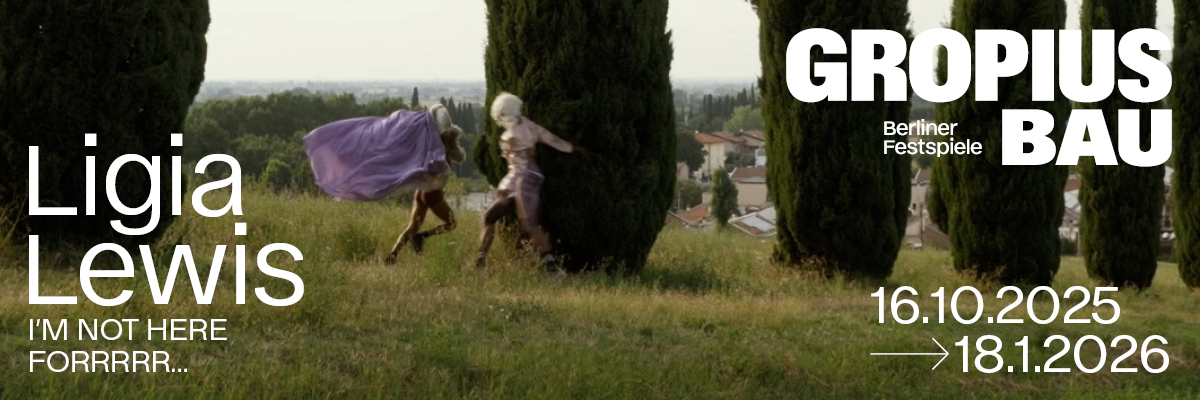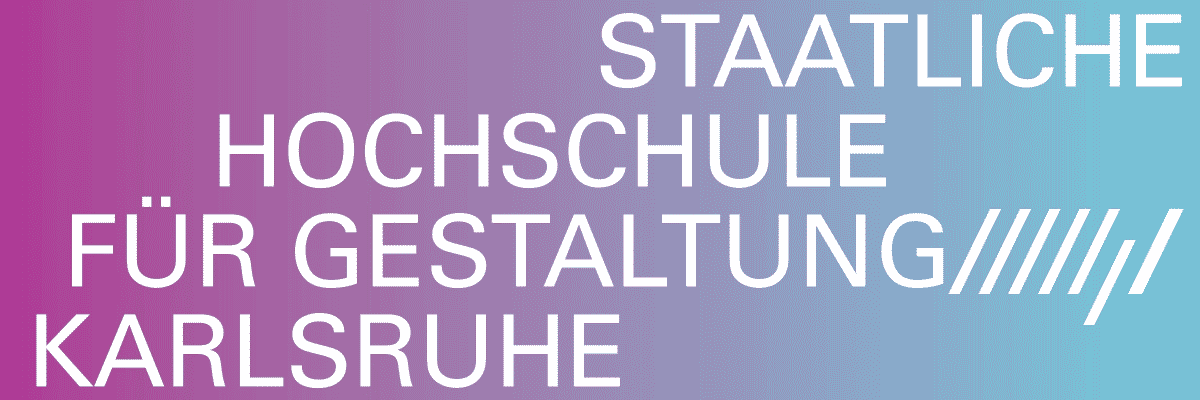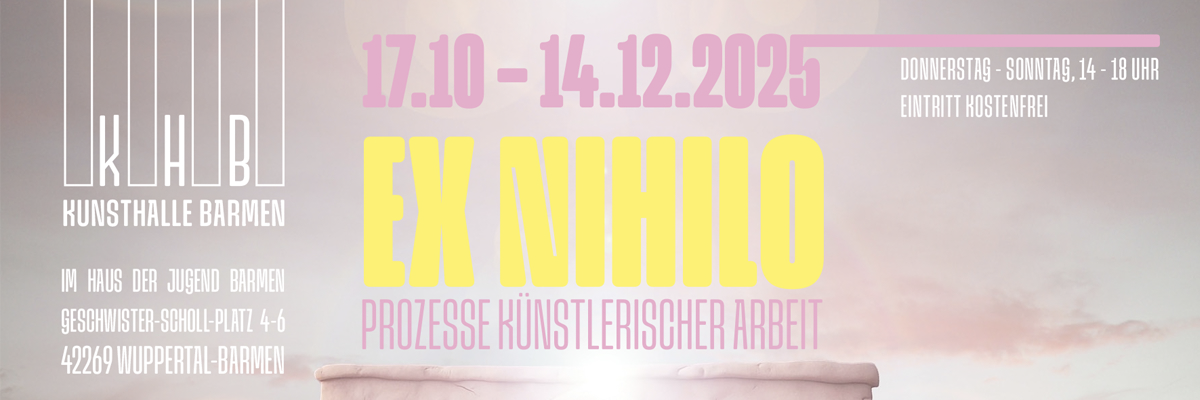
Céline Struger
Céline Struger: Pylon
Project Info
- 💙 Studio PRÁM
- 💚 Šárka Koudelová
- 🖤 Céline Struger
- 💜 Šárka Koudelová
- 💛 Juliana Vlčková
Share on
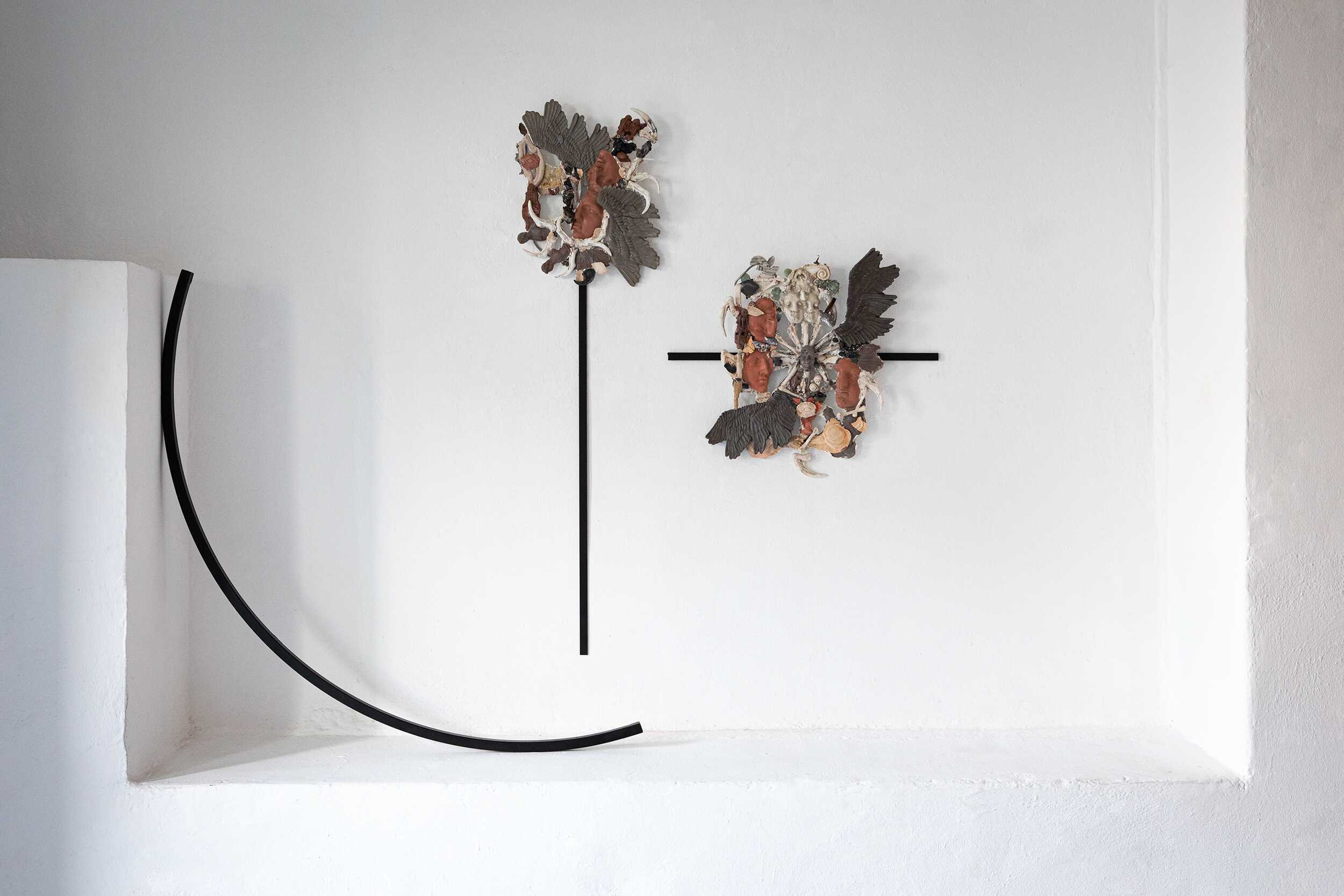
Advertisement
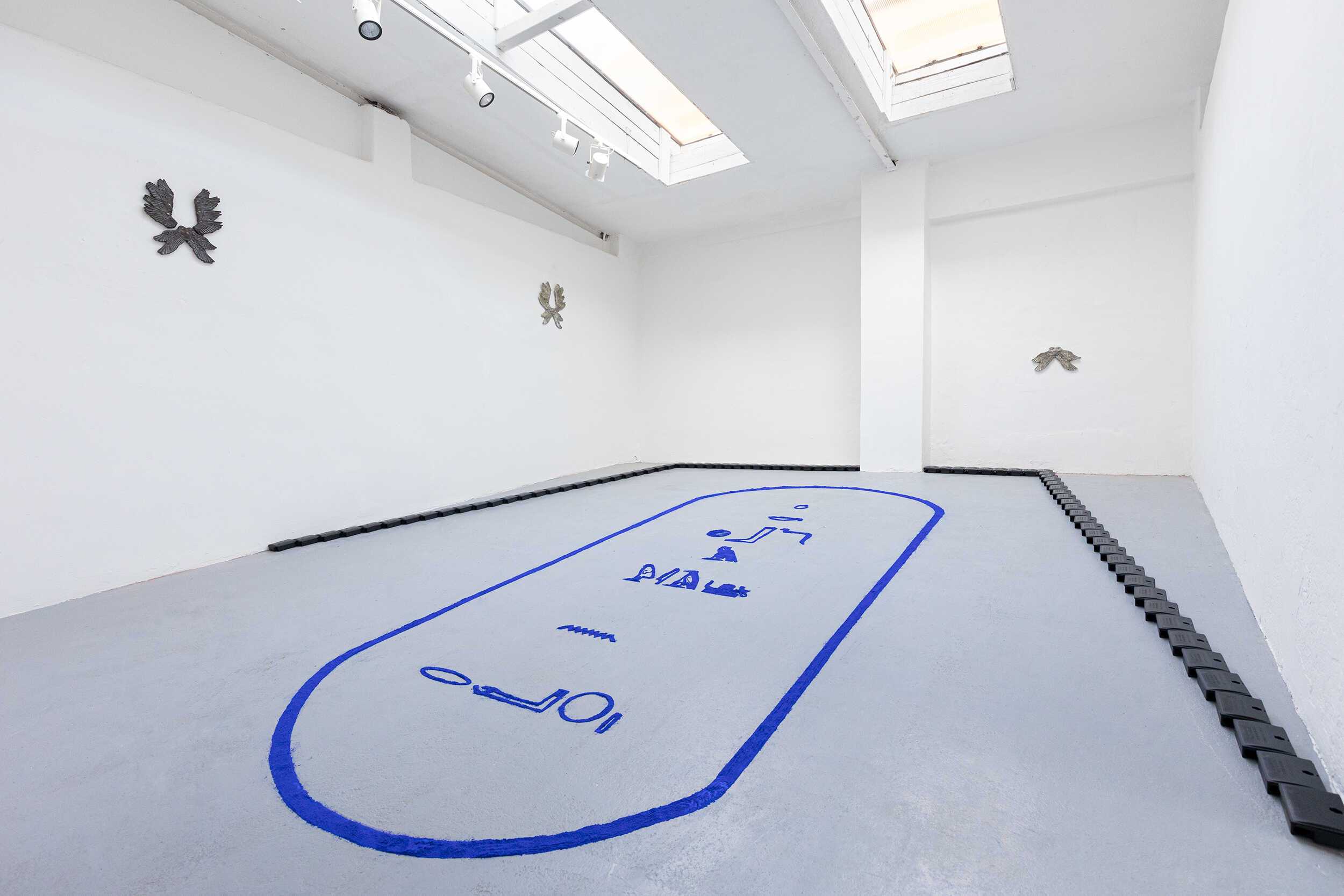


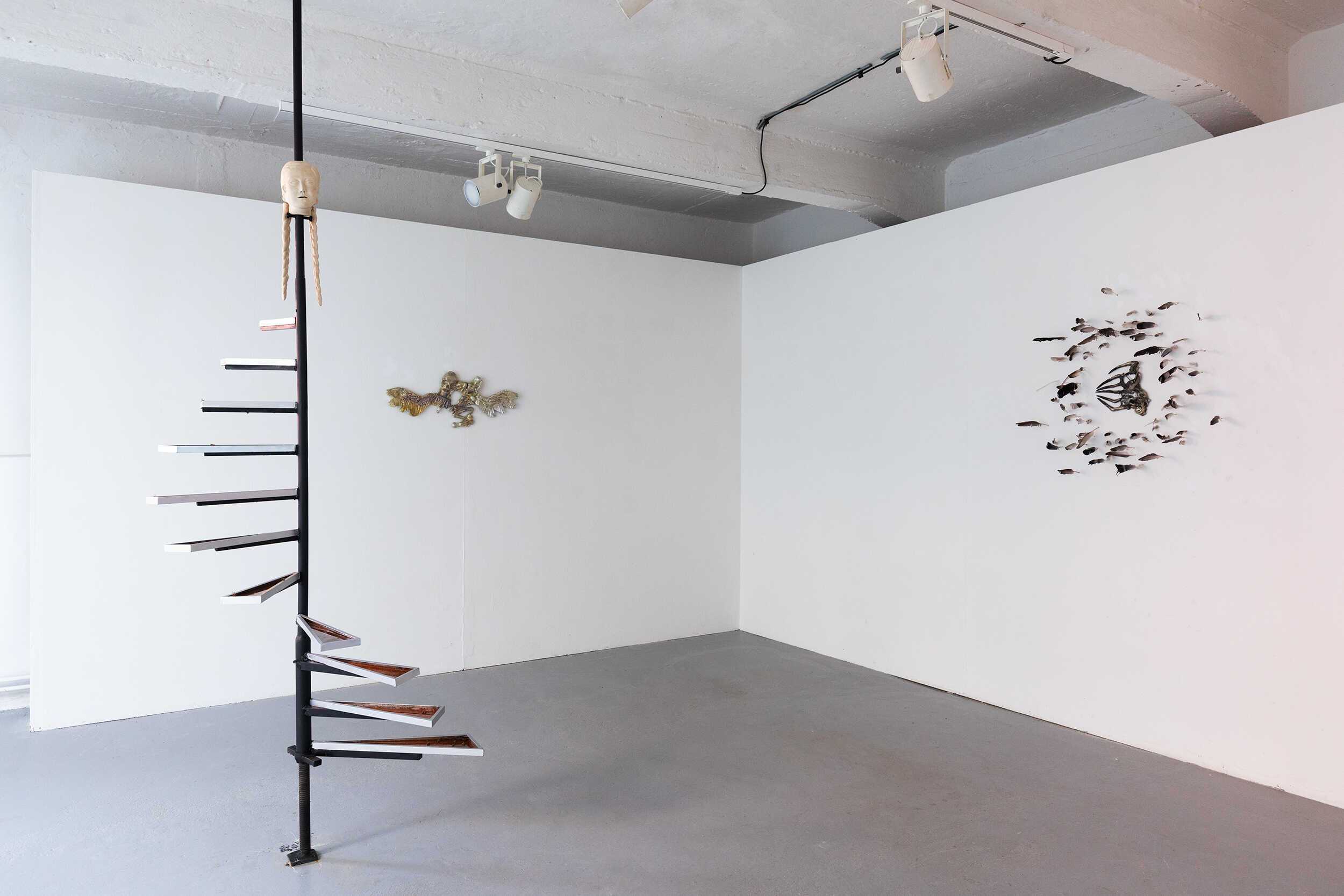
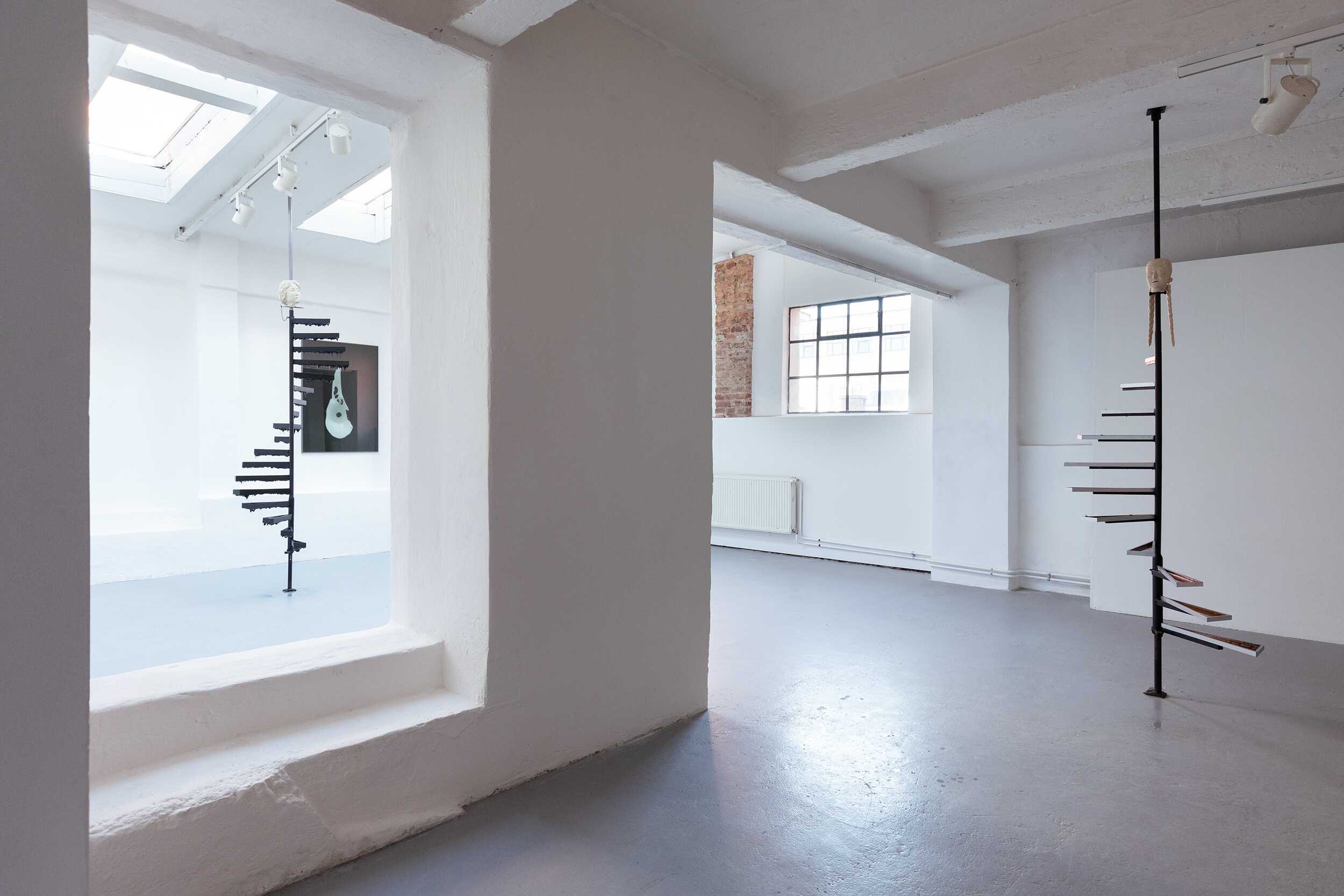
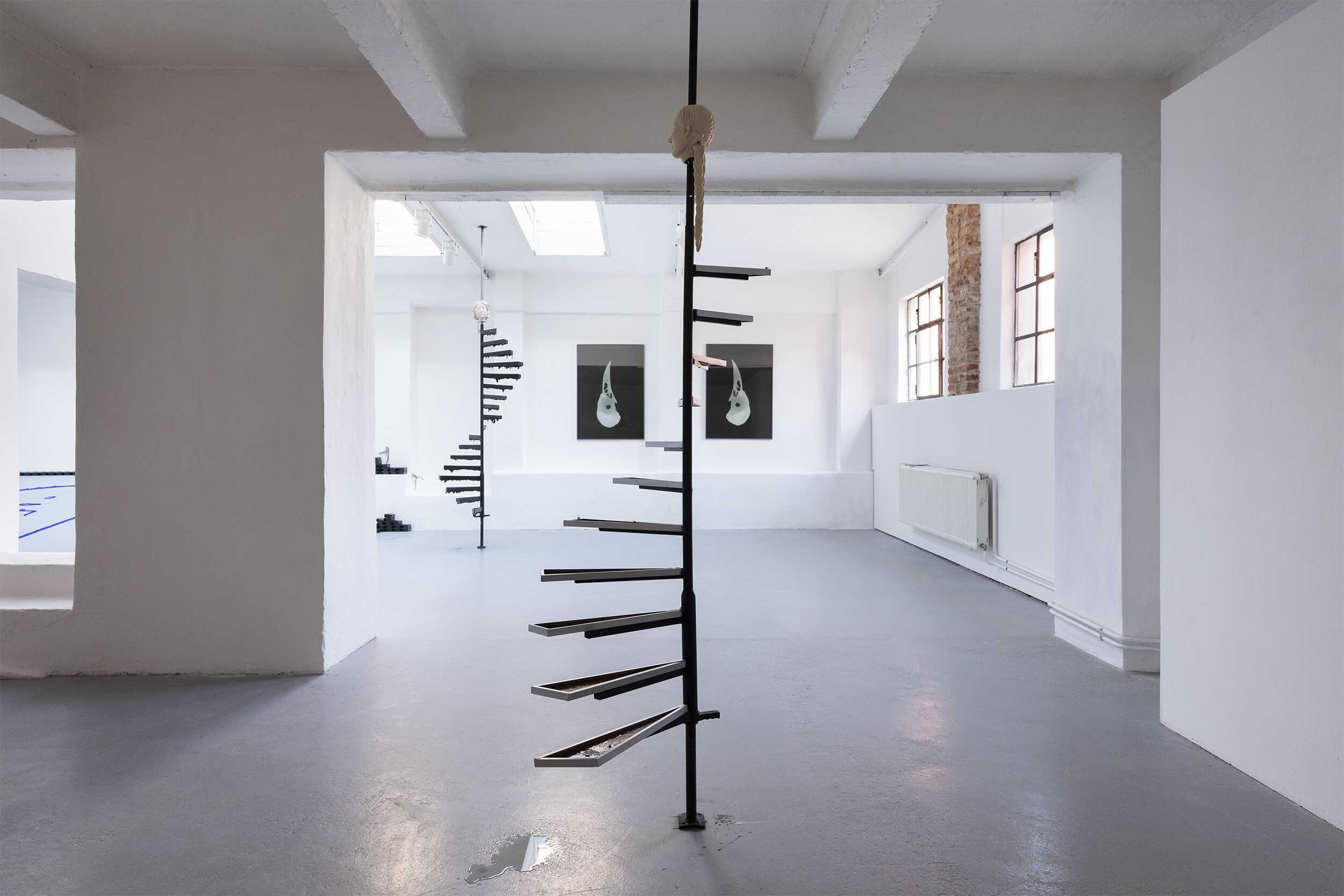


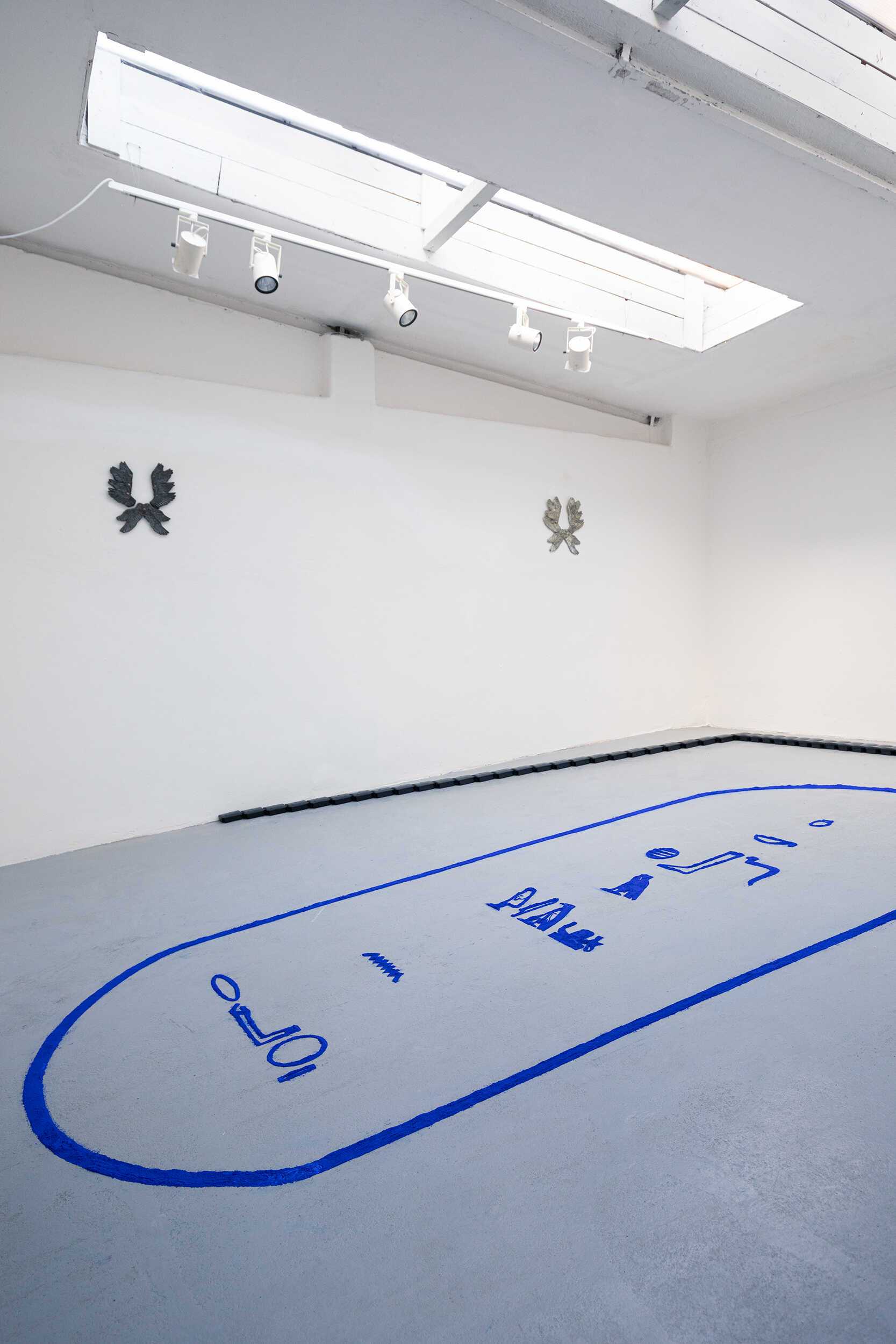
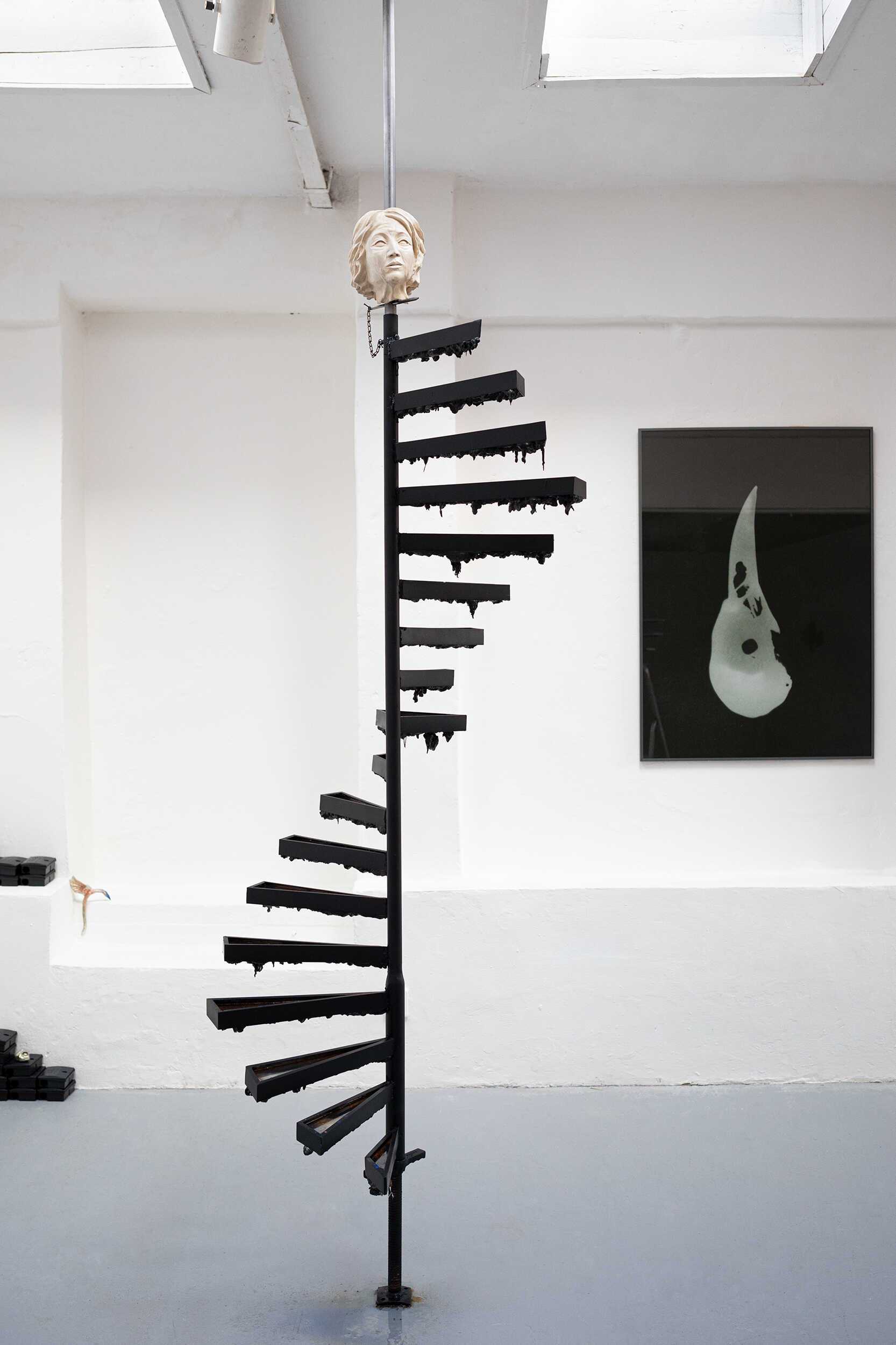
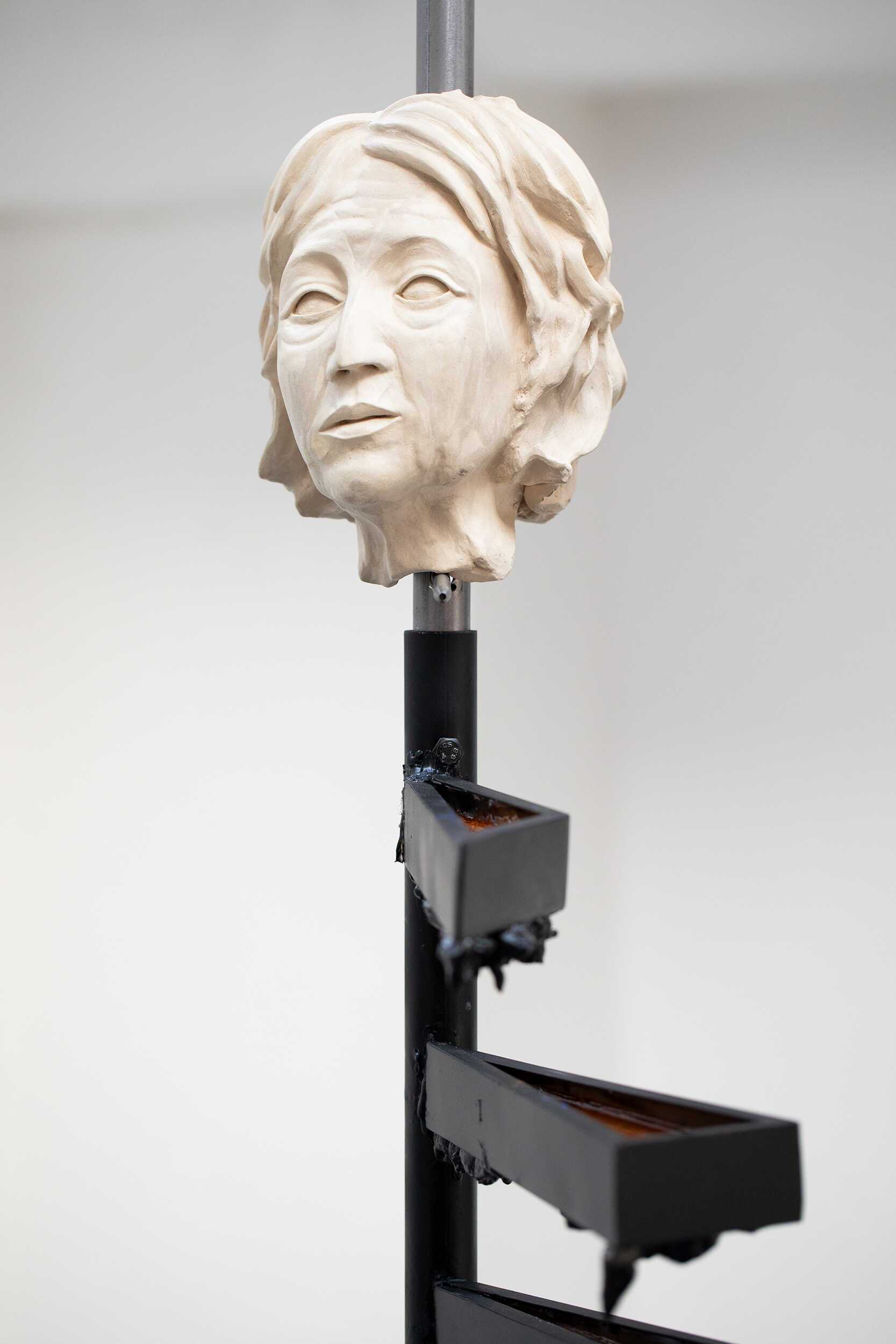
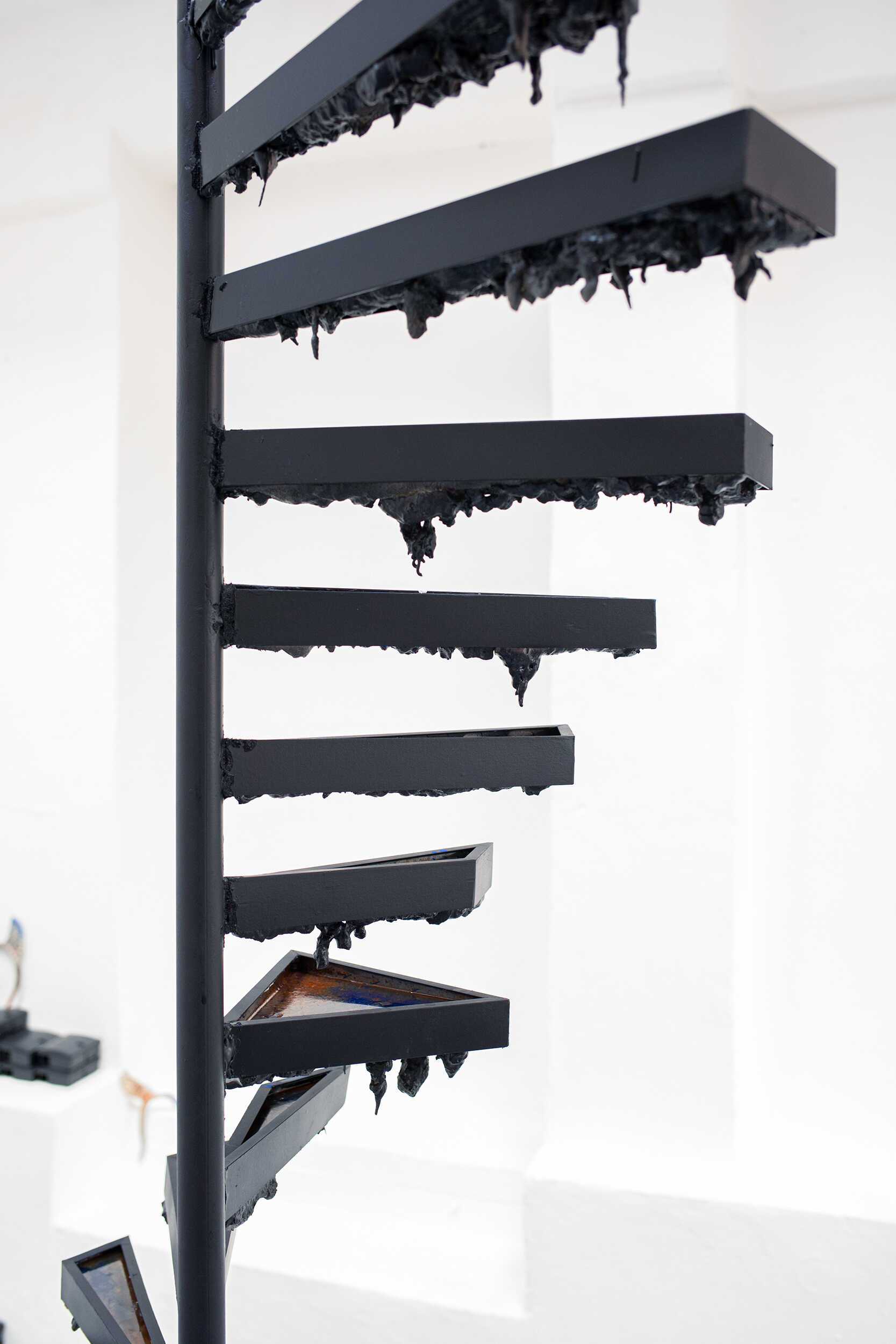
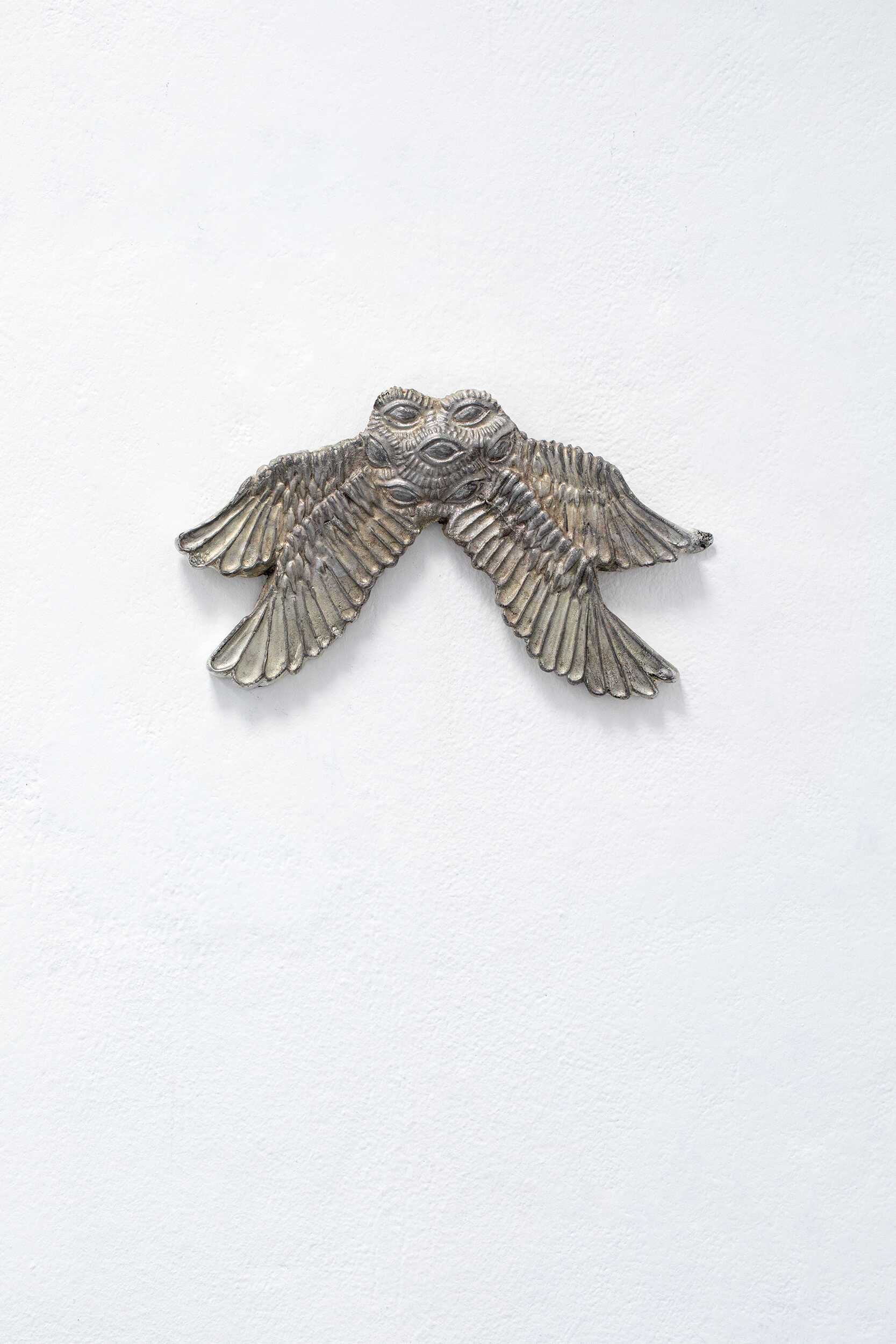
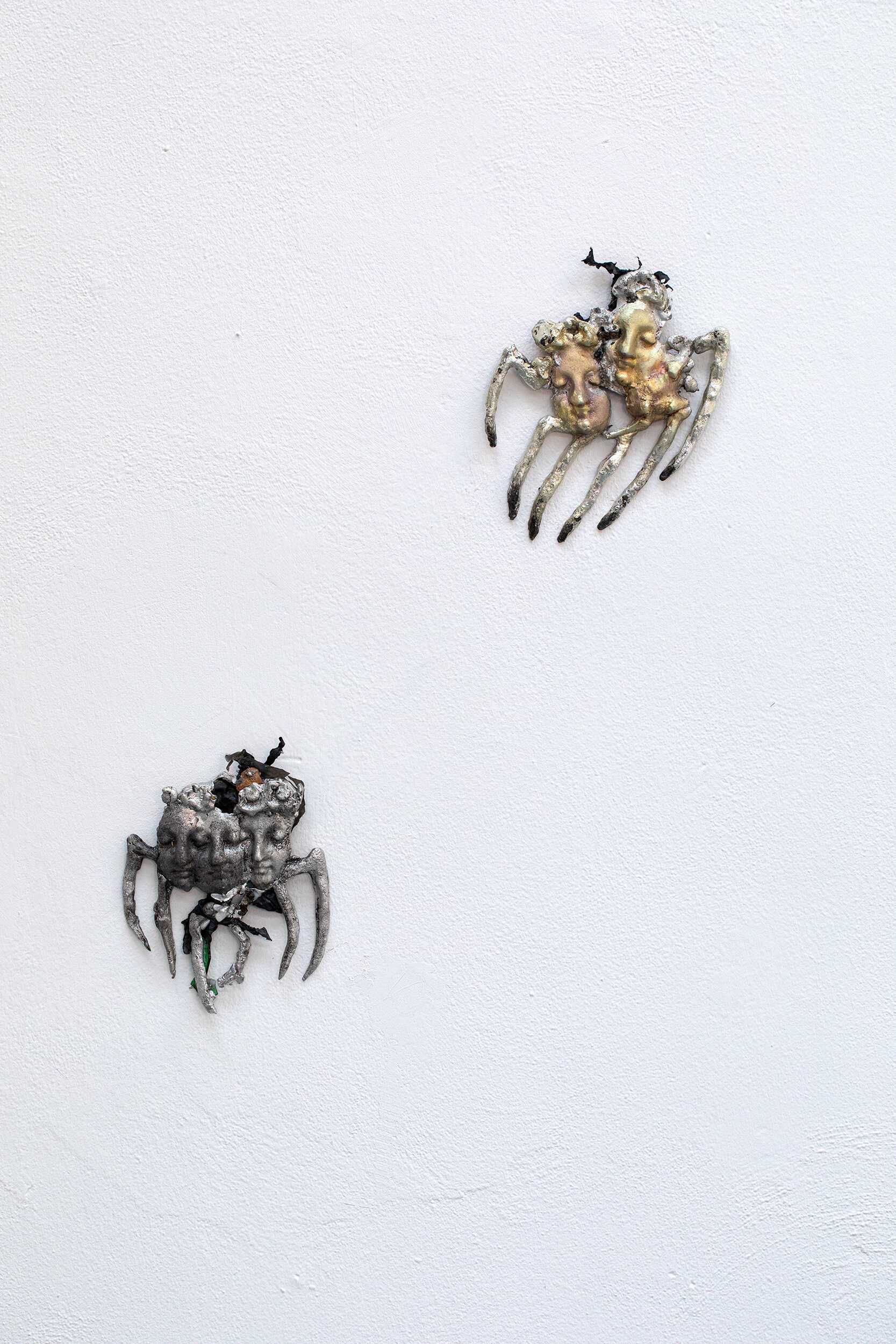

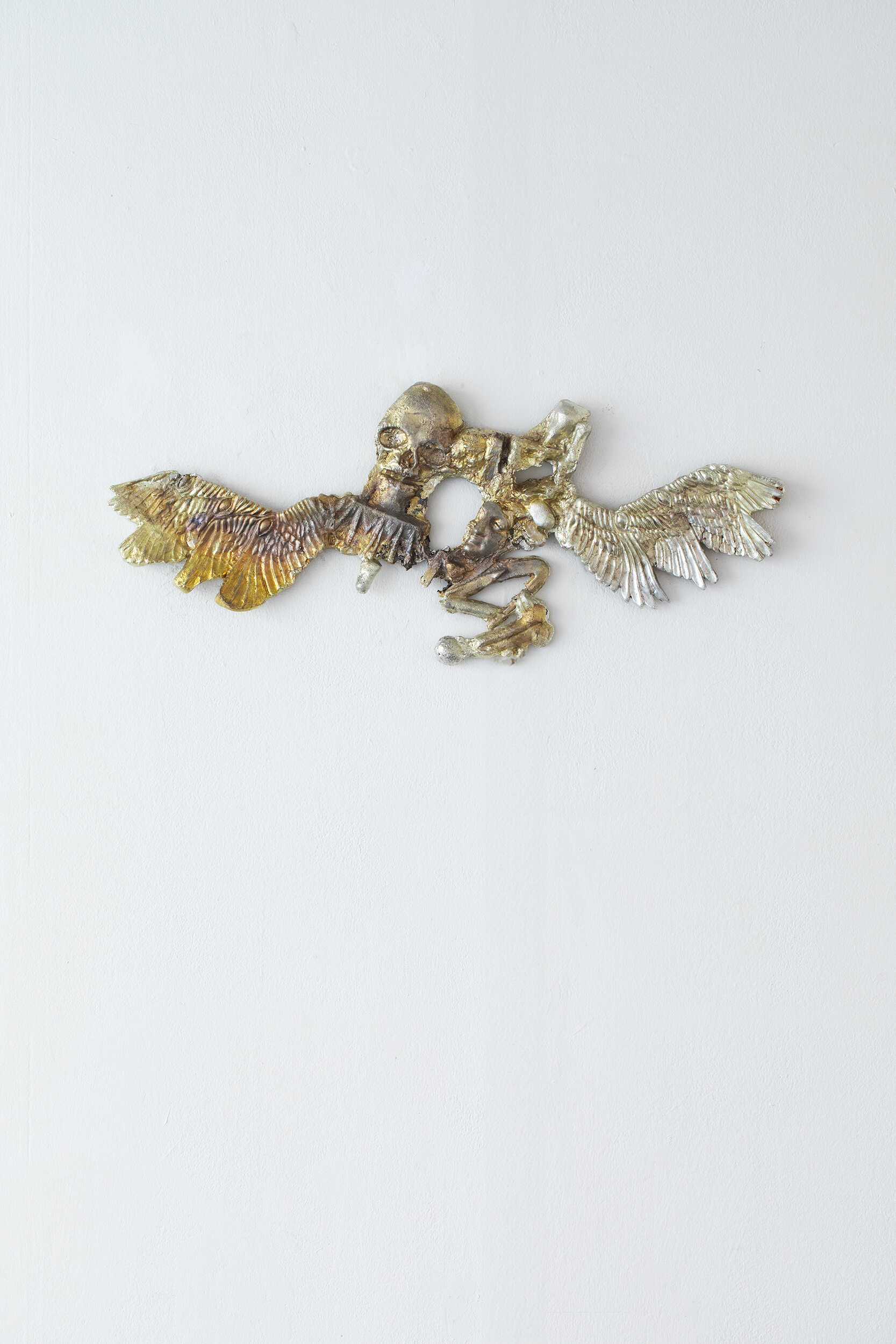
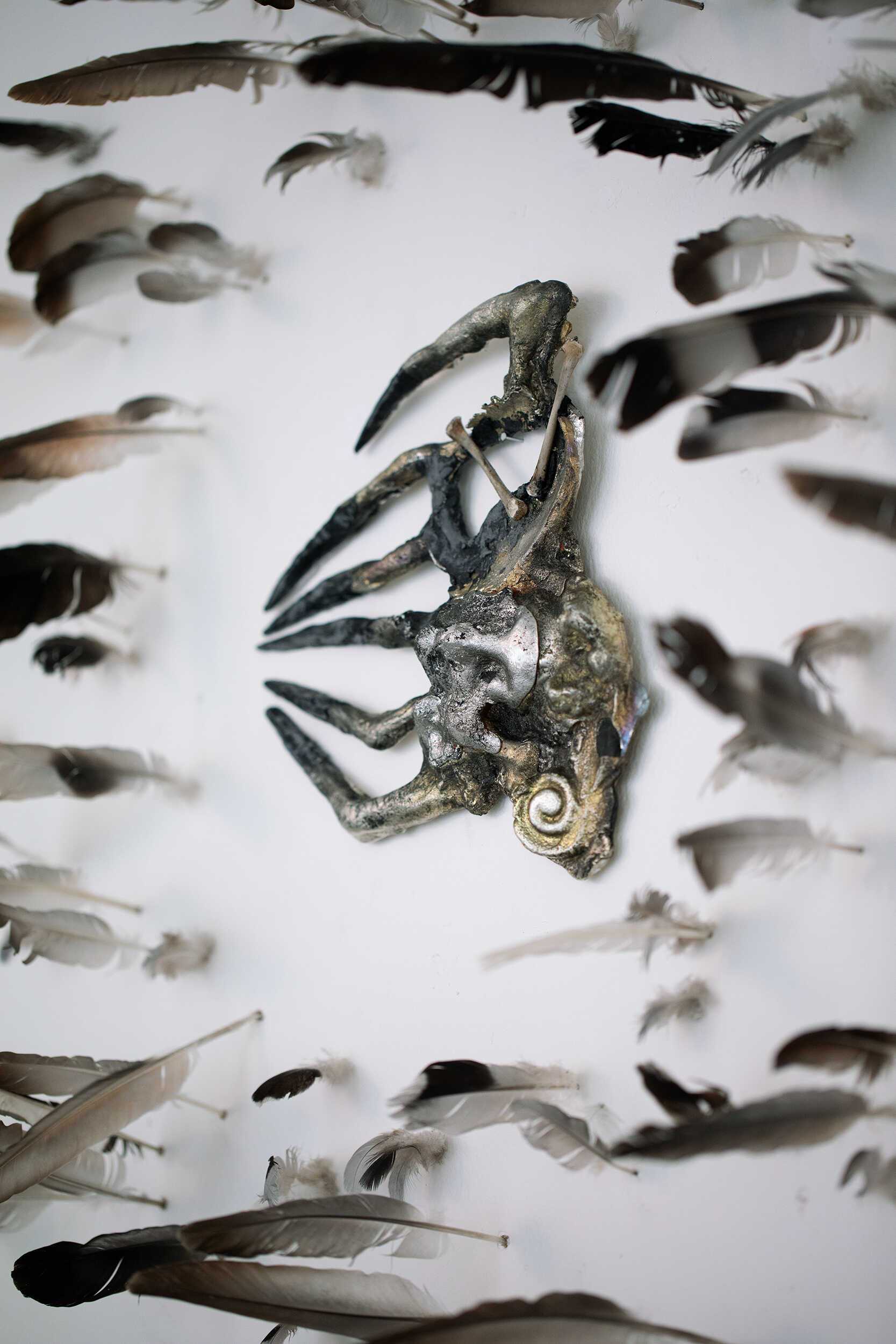
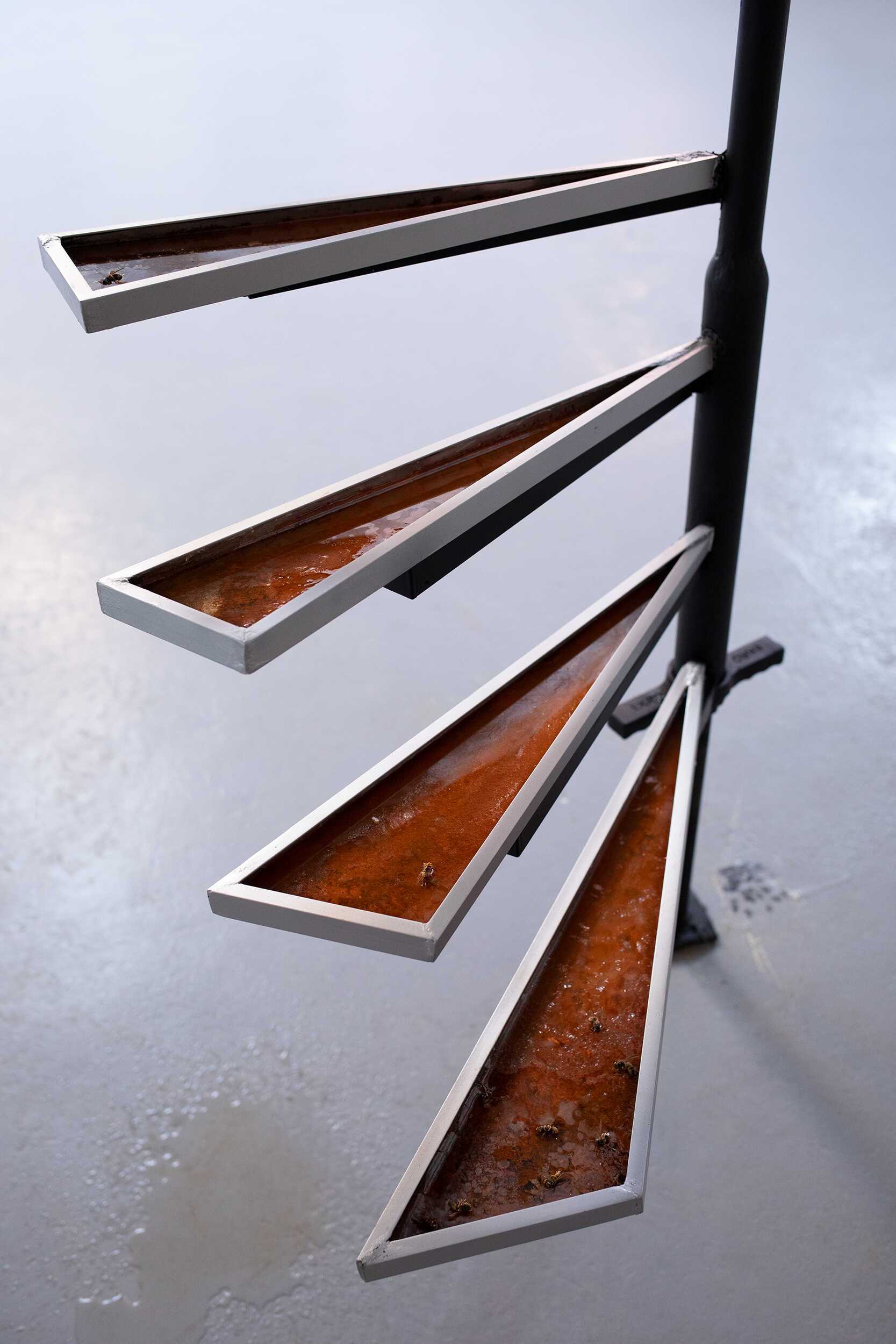
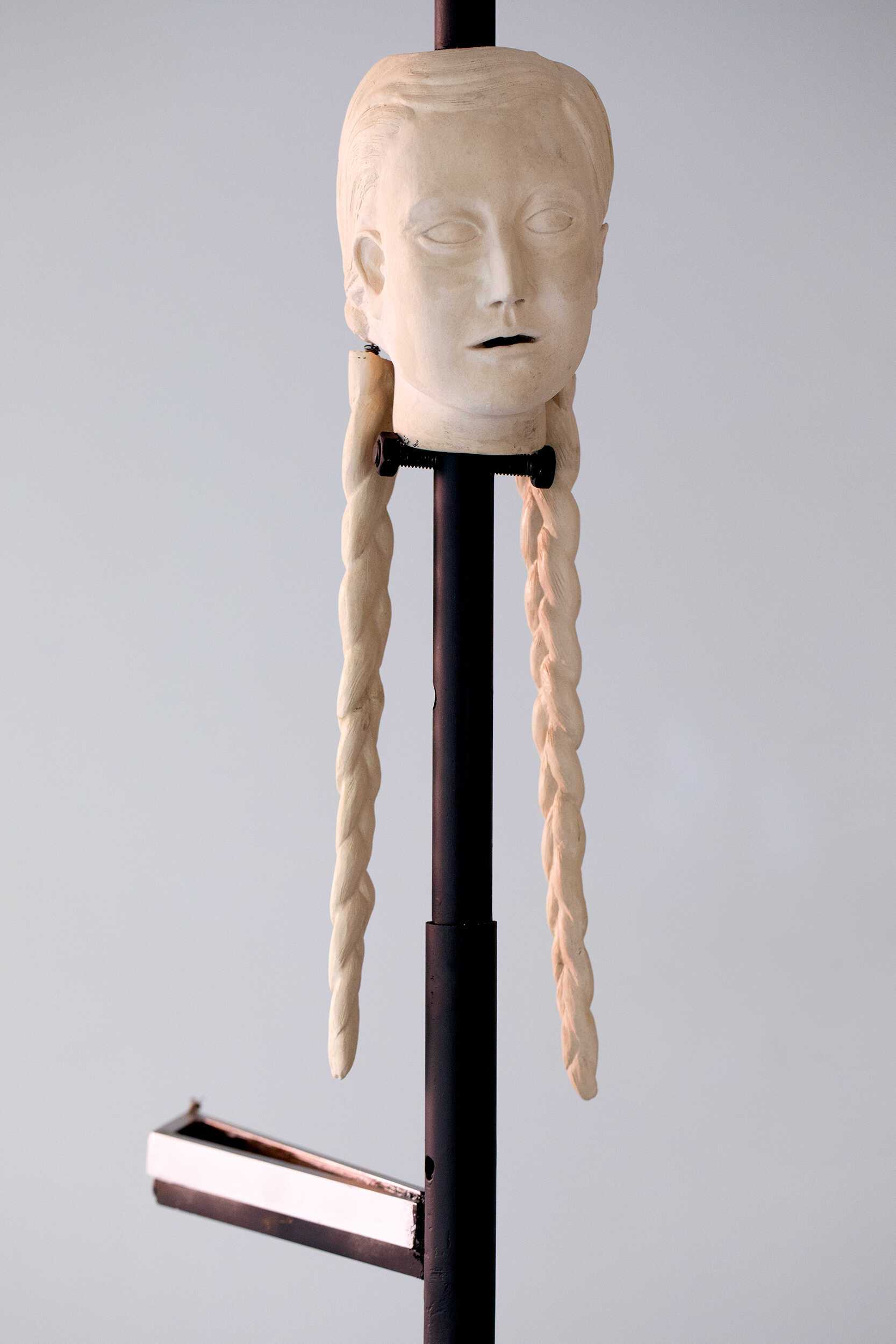
The title of the exhibition – Pylon – connects the ancient Greek word for the gateway to a temple with
the contemporary English term for a power line tower. An aesthetic based on citations of classical
historical motifs and methods, together with technical references in the form of tyres, hoses and sharp
welded shapes, form the creative axis of Céline Struger’s work. In her objects and installations, she
juxtaposes the initial semantic contradiction ahistorically with a kind of patina of civilizational decline.
All that remains of the ancient figures are fragments of faces, reminiscent of posthumous masks, fused
by the pressure of centuries and material with bird bones, clay shards and other remains in a collagelike
conglomerate. The water in the geometric shapes is murky, the metal parts rust, the mounting
foam leaks and moulders.
Beyond this through-line, drawn from ancient mythology and medieval sculpture, the main reference to
the pylons of Egyptian temple complexes is a floor installation consisting of blue pigment and a
fragment of a poem by the American writer, poet and composer Ishmael Reed I am a cowboy in the
boat of Ra1 from 1938, whose verses were translated and transcribed for Céline from English into
ancient Egyptian and hieroglyphs by Egyptologist Rita Lucarelli. The Sun boat of the god Ra is a central
symbol of ancient Egyptian mythology and the vehicle for the Sun god’s journey across the sky and
through the underworld. The concept of his daily resurrection is a metaphor for the cycle of life and
death, and the afterlife. Belief in the afterlife and all the well-known cultural heritage that resulted from
it was a kind of “coping mechanism” with human mortality. Is there any way we can relate to the
ancient ways of mourning and coping with the loss of loved ones, even though we treat human remains
in a diametrically different way? Céline explores the theme of mortality and the ahistorical nature of the
cycle of life in a very personal way in the exhibition – two DNA-like structures that stretch between the
floor and ceiling are crowned with ceramic heads of her grandmother and mother. Contrary to the
expected reading, the younger girl’s head belongs to her grandmother and the older one to her mother
– her daughter. Apart from the fact that they cannot be denied a kind of eternal beauty of caryatids,
they are also a split female version of the double-headed god Janus, a symbol of transformation and
transition from past to future, from childhood to adulthood.
The underworld of our cities is inhabited by mice. They live on the reverse side of our daily lives and
probably know a lot more about us than we know about them. Céline thematises our haughty and futile
attempts to control the underworld (and death?) and in the exhibition uses mousetraps as pinhole
cameras with which she takes simple photographic records of the space.
Therapist and educator Lois Tonkin2, who has long explored the ways in which we grieve and cope with
loss, in her article, Growing Around Grief – another way of looking at grief and recovery, describes a
concept that she visualizes in three situations – first, grief fills completely our entire lives with darkness
(1), and although we expect it to abate, the darkness to recede and occupy only a small part (2), it
never does. On the contrary, the boundary of our existence will outgrow the dark grief that still fills our
whole old life (3). The place of passage where light enters the dark room and life finds its way out may
be called a pylon.
1Reed, Ishmael, New and Collected Poems 1964 – 2007, Da Capo, 2007, ISBN-13 9781568583419
2 Tonkin, Lois, Growing around grief—another way of looking at grief and recovery, Bereavement Care:
Vol. 15, No. 1, pp. 10-10., 1996 [the title translated to Czech]
Šárka Koudelová
